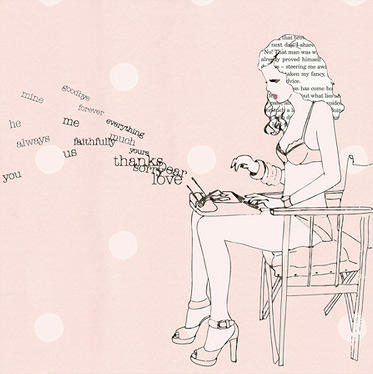This week in Sunday Life I sign off, sincerely

Poor Sreejesh got me so very wrong. During the week the charming and enthusiastic IT specialist from some outpost in India contacted me, trying to win some online business. He was doing well. Until he got to his sign-off. There, it was, alongside his name: “<3333333”.
First, the kid mistook me for someone who cared to know what his little flurry of key strokes meant. I Googled it and found it’s emoticon-speak for “lots of hearts” (turn your head on its side if you’re still stumped). Second, he signed off with hearts?! We’ve never met, not even virtually.
We all know by now by now that technology is meant to be making us fat, dumb and boring. But I mostly think the rapidly shifting electronic world is making us confused, and so we do awkward things, like bag out our boss on Twitter etc, as we adjust.
It’s like the nascent stages of a sexual dalliance – we’re awkward and cringy until we get the hang of things. Which would make the fraught issue of electronic sign-offs the bra unhook – something we seem unable to ever master, despite the fact we’ve been on email for decades now.
The issue prompted me this week to have a good look at my own sign-off style. For years I’ve run an automatic signature at the bottom of my emails with the sign-off, “Be well, Sarah”. Which was highly efficient – if a little worthy – in that it saved me 12 whole characters every email. However it came unstuck the time I sent it to a work colleague dying of cancer. It was suddenly a terribly inappropriate command.
Worthy is wrong. So is whacky. I got hit with a “Be Fabulous, Annie” from someone (not called Annie) recently. My response was an immediate, no thanks, I’m not in the mood. “Best fishes” from someone who works in the aquatics business and “Zenfully” from the pushy dude wanting to sell me his 20-CD life changing program for $29.95 ***, also struck me as, well, insincere.
Ditto those coloured, blinking emoticons. The New York Times this month went to town on the growing use of the winking face in high-end business transactions. Personally, the one with the sticking out tongue gets my goat. The point was made by one overuser interviewed for the article that emoticons soften the blow of her hurried, terse interactions. She tacks one on for good measure. Which is like spanking a kid as you hand them a lollypop.
And this is the point, isn’t it. If we’re awkward about our sign-offs, it’s because we’re awkward about how hurried and terse we’ve become with our interactions. A simple “Best, John” becomes the abrupt wrapping on a cranky offering. We fire off dozens – if not hundreds – of e-interactions a day and it hovers over us like Catholic guilt that we are not truly connecting or offering our warmth as we do. We’re giving too much of our time, but enough of our hearts (<333333).
So, how are we meant to sign-off? I think we can start by sending less, but more heart-felt (not heart emoticon-ed) missives. So that the tone is right – clear, mindful and careful – from the start. I’d hazard a guess: 33% of replies aren’t necessary and 66% of us would prefer no email at all to a flaccid, tongue-pokey (:-b) one.
Sometimes, though, we have to be perfunctory, right? In such cases, I have to say, I’m a fan of the “x” – just the one, and definitely not accompanied by an “o” (we kiss a colleague’s cheek, but we don’t cuddle, right?).
I’d been awkward about this “x” business, too, for some time. But it’s one of those things – once you start, there’s no going back. An “x”-less sign-off seems cold.
Plus, I learned this week that the “x” is now largely acceptable. It’s so commonplace, even in the business community, that it hardly seems inappropriate, even when mailing strangers. Norman Mailer’s widow Norris recently shared that she always uses an “x”, but as a “placeholder”. Which is where the tradition stemmed from – an “x” was used in medieval times by the illiterate to signify where they’d “kissed” to seal the document in the absence of a signature.
But for now, think I’ll work with “Warmly, Sarah”. If only as a reminder to keep things that way, don’t you think? (“¯\_(ツ)_/¯”).
Am I on my own here? Have you struggled to be sincere and authentic in your frantic email correspondence? What do you go with?

